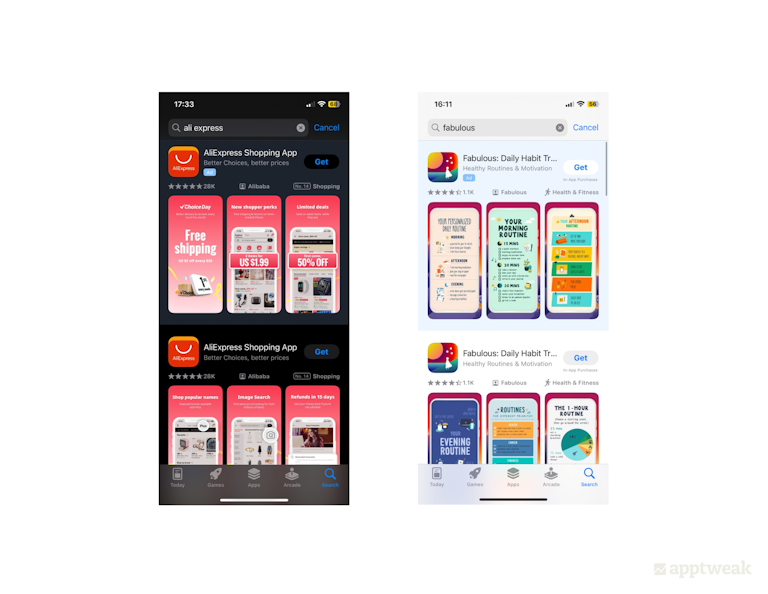
Should You Run Brand Defense Campaigns in Apple Search Ads?
Whether you’re a beginner or seasoned veteran of Apple Search Ads (ASA), you’ve probably heard of the concept of brand defense.
Brand defense consists of bidding on your own brand terms in an attempt to deny your competitors visibility on these.
Before you decide to bid on competitor terms, you should understand the cost associated with brand defense campaigns, as these come with high levels of cannibalization. Cannibalization occurs when a store visitor installs your app from your ad, which you pay for, even though they might have done so without the ad, at no cost.
Running brand defense campaigns should not necessarily be all about return on investment. Other key factors may influence your choice to run brand defense campaigns or not.
Let’s explore these key considerations that should guide your decision.
1. To strengthen your brand reputation
Advertisement isn’t always about performance and return on investment – it’s also a good way to build your brand image and create consistency.
Branding is key, and you want your brand and its unique selling proposition to stay top of mind for store visitors. As such, running a brand defense campaign can be beneficial in maintaining your brand’s presence, even if it doesn’t produce immediate profit.
Furthermore, your ad appears on your brand term, it displays your app’s first 3 screenshots (or the one in landscape mode), with the organic result below showcasing the next 3. This gives you 6 screenshots on the first screen of search results to highlight your brand, with no competition in sight.

2. To highlight new features
Another way to run brand defense campaigns is to align them with your app’s development cycle.
Throughout its lifecycle, an app undergoes numerous phases that often include the release of new features or rebranding campaigns. Store visitors already have a lot of information to digest on a daily basis and may miss certain app updates if not prominently communicated.
In this case, consider launching a temporary brand defense campaign to highlight the new feature, event, or rebranding campaign of your app via Custom Product Pages (CPPs) is very interesting. This is particularly interesting for returning users, who will have an added incentive to re-download your app when they see that it has added new features since they uninstalled it.
In addition, comparing the performance of these temporary brand defense campaigns can help you better understand which features or events were most successful, or whether your rebranding was well received by the public.
Apple Search Ads: Essential Concepts for Effective Campaigns
In this manual, find 10 tips to create effective Search Ads campaigns & optimize your bid performance.
Download now3. To track post-install metrics
One of the advantages of Apple Search Ads is the ability to monitor post-install metrics. Through integrations with Mobile Measurement Partners (MMPs) like Adjust and AppsFlyer, you can track user behavior after they’ve installed your app.
Metrics like retention rate, app launches, tutorial completion, time spent in-app, etc. can help you better understand how users interact with your app, spot where issues arise that cause churn, and take actions to improve your app as a whole. This level of insight would be impossible without ad-driven installations, and this might justify you running brand defense campaigns.
4. To increase the cost of your competitors bids
A strategic approach to brand defense involves reacting to aggressive competitor activity on your brand terms.
In such cases, you want to set a high bid on your own brand terms to increase the cost per install of your own brand terms for your competitors.
Apple Search Ads’ bidding process heavily weighs conversion rates. As your app naturally has the highest conversion rate for its own brand terms, competitors would need to increase their bids to outbid you.
Conclusion
Brand defense or no brand defense campaign?
Ultimately, the choice will come down to your own company and goals.
However, deciding solely based on the profit a brand defense campaign generates might not be the best approach.
Consider how brand defense campaigns can help achieve non-profit-related goals. If you choose to pause your brand defense campaign due to low ROI, take some time to explore if bidding on other keywords could better align with your ROI goals.



 Simon Thillay
Simon Thillay

 Micah Motta
Micah Motta

 Georgia Shepherd
Georgia Shepherd